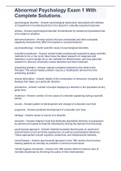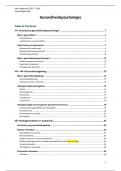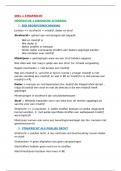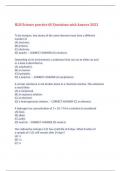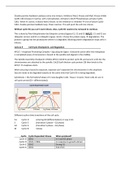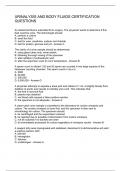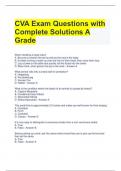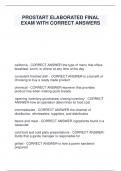BENEFICIAL INTERESTS
Manual Unit 1 – INTRODUCTION TO EQUITY AND TRUSTS
• In 1408, Percy, Earl of Lessex embarked on crusade for months. Who will take care
of his property? His wife Matilda is not allowed and his children are too young.
Hence, ask his brother, William, to act as a protector and caretaker for the benefit of
Matilda and children.
• BUT William then claims Percy’s land for himself, and tells Matilda and the children
to find alternative accommodation.
• Example of a trust: William (a trustee) held the land on trust for Matilda and her
children.
• → Common law would not protect Matilda and children: William was the legal owner
of the land and Matilda and her offspring had no rights whatsoever.
• BUT new branch of “equity” was emerging: claimants who felt that they were not
receiving justice in the common law courts might petition the King, the fount of all
justice, and he might declare that William had acted against good conscience and
order him to carry out Percy’s wishes.
Equity introduced trusts and a range of other remedies including an ‘injunction’.
1. Historical background
1.1 What is Meant by Equity?
Equity is a body of law in its own right, originally administered solely by the Court of
Chancery rather than the common law courts, but now deployed in the decisions of all courts.
Equity includes not only trusts, but also covers equitable remedies such as injunctions,
dealings with land and mortgages, the administration of estates of deceased persons,
partnerships, the setting aside of written instruments and many other apparently unrelated
topics.
Equity was never originally intended to be a separate system of law, it grew alongside the
common law to supplement it.
Lord Chancellor, and later his Court of Chancery, purpose was to deal with individual
grievances and petitions to the King, the fount of all justice.
1.2 Origins and Development of Equity
Rigidity of the common law in the 13th to 15th centuries: if a legal problem fitted precisely
into a previously recognised cause of action (but limited in number) then a claim could be
made in the common law courts. Otherwise, no claim.
So individuals had to petition the King for justice, who delegated this to his Lord Chancellor.
Eventually, the petitions went directly to the Chancellor. By the 1400s, there was a Court of
Chancery and a body of decisions called equity.
Key role of “Conscience” in equity development, largely due to the input of successive
Chancellors who were ecclesiastics.
1
,BUT by 19th century, equity became just as inflexible as common law before: very few
judges, hard to know which court to petition to, if a case had claims in common law and
equity needed two separate actions.
The Judicature Acts 1873 and 1875 created one Supreme Court, albeit with different
divisions: Chancery for equity cases and the Queen’s Bench for common law cases. But each
division may determine a point of equity in any case.
2. Introduction to trusts
2.1 What is a Trust?
A trust ... is the relationship which arises wherever a person called the trustee is compelled in
equity to hold property ... for the benefit of some persons (of whom he may be one, and who
are termed beneficiaries) or for some object permitted by law, in such a way that the real
benefit of the property accrues, not to the trustee, but to the beneficiaries or other objects of
the trust. (Keeting and Sheridan, The Law of Trusts, 12th edn, 1994)
=
• there is a binding obligation placed on a person - a ‘trustee’;
• to look after property for the benefit of another - a ‘beneficiary’ - or for a purpose
permitted by law.
The obligation placed on trustee can be enforced by the beneficiary.
→ A trust allows the separation of control of property from its enjoyment and use. The
trustee has management and control of the property subject to the trust (the ‘trust property’),
but the beneficiary is the ‘real’ owner in the sense that he enjoys the benefit of the property.
Terminology:
• ‘settlor’, a person who sets up a trust in his lifetime
• ‘Trustee’
• ‘Beneficiary’
• ‘express trust’, a trust which is set up intentionally by the settlor
• ‘trust instrument’, a written document which creates a trust
When settlors create trusts, they define the benefit the beneficiaries are to receive from the
property: the settlor can give the beneficiaries a specific benefit without giving them outright
ownership.
2.2 Features of a Trust
Trustees have the management or control of the trust property and the beneficiaries have the
benefit.
Equity recognises that when a trust is created, the trustees hold the legal title or interest in the
trust property and the beneficiary has an equitable interest in the trust property. Equitable
interests are also known as ‘beneficial interests’.
2.2.1 Legal interest held by the trustee
The fact that trustees hold the legal title enables them to manage the trust property.
As far as the outside world is concerned, the holder of the legal title, the trustee, is the owner
of the trust property.
BUT, in contrast to an outright owner, trustees are obliged to hold the property for the benefit
of those possessing the equitable title. This obligation is the trust.
2
,→ beneficiaries get the benefits from the trust property BUT not direct from the bank,
building society or company; instead beneficiaries get the benefits indirectly by enforcing the
trust obligation against the trustee.
To guard against the trustees misusing the trust property, the law imposes very rigorous
duties on them:
• Duties require trustees to dispose of the trust property in accordance with the terms of
the trust.
• This ensures that the beneficiaries get the benefit the settlor intended.
• Trustees must do their best for the trust: they owe a duty to invest the trust property so
that it brings in a reasonable return and, unlike outright owners, who are not subject to
any trust, must avoid speculative investments.
• If trustees breach a duty, the beneficiaries can sue them to make good any loss out of
the trustees’ own money.
2.2.2 Equitable interest held by the beneficiary
The equitable interest gives beneficiaries two rights: personal and proprietary.
• beneficiaries have a personal right to enforce the trustees’ duties and to seek
compensation for any breaches.
o ‘Personal’ because it is enforceable against the trustees personally.
• Beneficiaries have a proprietary right, ie, an ownership interest in the trust property
itself.
o Twofold proprietary right:
▪ it can be enforced against the trustee and against successors in title (ie
people who subsequently get the legal title to the trust property).
▪ it is itself an item of property (just like shares in a company or money
in a bank) which can be sold or given away.
A trust involves separate ownership of the legal and equitable interests. Hence, a sole trustee
cannot hold on trust for himself alone. If he is alone, there is no trust so the ‘trustee’ is the
outright owner.
2.3 Some Different Types of Trust
2.3.1 Fixed trusts
‘fixed trusts’ because the terms of the trust define the share of the trust property which the
beneficiary will receive.
Fixed trusts include:
• ‘On trust for X for life remainder to Y’
o = it creates ‘successive interests’ = it creates beneficial interests which have
effect one after the other.
o X (the ‘life tenant’) has a ‘life interest’; Y (‘the remainderman’) has an
‘interest in remainder’.
o The trustees will pay only the trust income to X during his or her lifetime.
o Trust income will consist of recurring receipts from the invested trust
property, such as interest from banks and building societies, dividends on
company shares and rent from land.
3
, o When X dies, the trustees will transfer the trust property itself (the money,
shares and land) to Y, whereupon the trust will come to an end. The trust
property is called ‘trust capital’.
• ‘On trust for A if he attains 21 but if he dies before then, for B’
o A’s interest is conditional (or ‘contingent’) on A attaining 21.
o In the meantime, the trustees will look after the trust property for A’s benefit.
o If A dies before attaining the age of 21, his interest fails and B becomes
entitled.
• ‘On trust for Z’ where Z is an infant or cannot manage his affairs for some other reason
o Not appropriate to transfer large sums of money to Z by way of outright gift.
o A trust is used here not so much to carve up the beneficial interests, but to
ensure that the property is managed by trustees for the benefit of Z.
• ‘On trust for C’ where C is an adult with full mental capacity
o ‘bare trust’ because the trustees hold on trust for a sole adult beneficiary
possessing full mental capacity absolutely (with no limitations or conditions
attached).
o the trustees must handle the trust property as the beneficiary dictates.
o the beneficiary can end the trust at any time, by demanding that the trustees
transfer legal title to him so that he becomes the outright owner (Saunders v
Vautier (1841) 4 Beav 115)
o Bare trusts may be created expressly and are quite common in the investment
world.
o Bare trusts also arise when a beneficiary under one of the other types of trust
we have looked at becomes solely and absolutely entitled to the trust property.
2.3.2 Discretionary trusts
A discretionary trust gives the trustees a discretion as to the amounts any beneficiary may
receive and/or whether particular beneficiaries receive anything at all.
When a settlor sets up a trust, he may be providing for a distribution to beneficiaries for many
years without knowing what the beneficiaries’ circumstances will be at that time. → A
discretionary trust allows the trustees to respond to changes in circumstances when the time
comes for distribution of the trust property.
No individual has an equitable interest under a discretionary trust until the trustees exercise
their discretion in his favour. Therefore, until such persons are allocated an interest by the
trustees, they are called ‘objects’ rather than beneficiaries.
2.4 Understanding Beneficial Interests
2.4.1 Introduction and terminology
The nature of a beneficial interest under a trust varies depending on the terms of the trust.
Important to understand it in order to advise:
• whether the beneficiary’s interest is unconditional or conditional and liable to fail if
the condition is not satisfied;
• when the beneficiary will get his interest, and
• what the beneficiary is entitled to receive.
A beneficial interest may be described as any or all of these:
• Vested or Contingent
4


